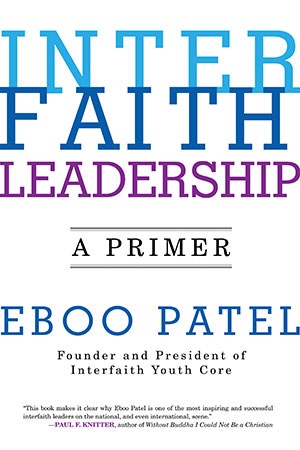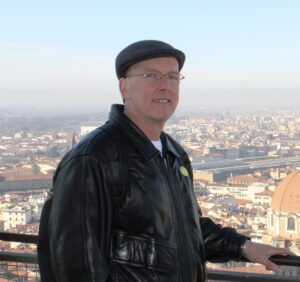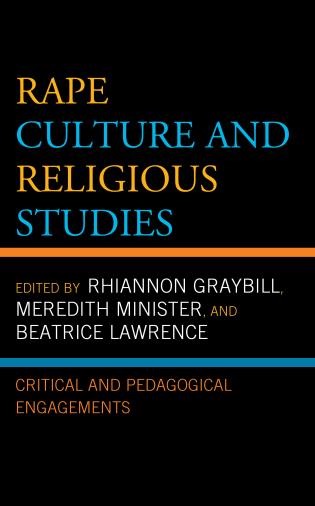religious studies
Select an item by clicking its checkbox
Jesus H. Christ: Be Aware of What Students Hear I was walking into the Den at Le Moyne College when I was accosted by a colleague in the English department. He asked, “What the hell are you teaching in your religion classes?” While I often ask myself this same question, ...
A “glacial erratic” on Skidegate, Haida Gwaii, British Columbia, Canada (photo by author) “Could God create a stone too heavy for God to lift?” This question may be familiar to those of us who teach about the traditional qualities of God in the philosophy of religion classroom. The so-called “paradox ...
Date Reviewed: August 21, 2020
Rape Culture and Religious Studies: Critical and Pedagogical Engagements stages a critical engagement between religious texts and the problem of sexual violence. Rape and other forms of sexual violence are widespread on college and university campuses; they also occur in sacred texts and religious traditions. The volume addresses these difficult intersections as they play out in texts, traditions, and university contexts. The volume gathers contributions from religious studies scholars to engage these questions from a variety of institutional contexts and to offer a constructive assessment of religious texts and traditions. (From the Publisher)

Interfaith Leadership: A Primer
Date Reviewed: August 11, 2017
To date, one thousand colleges and universities have engaged the Interfaith Youth Core (IFYC) to catalyze interfaith cooperation, educate interfaith leaders, and build knowledge of faith traditions. Authored by the founder of IFYC, Interfaith Leadership contributes to a key IFYC goal: to train seven thousand interfaith leaders by 2020.
Sharing his journey to interfaith leadership (Chapter 1), Patel discusses his theory of interfaith understanding (Chapters 2-3), shares his leadership vision (Chapter 4), and identifies leaders’ knowledge, skills, and personal qualities (Chapters 5-7). “Inter” in “interfaith” references “interaction between people who orient around religion differently”; “faith” stands for “how people relate to their religious and ethical traditions.” With the term interfaith, Patel highlights reciprocal influences: interactions with others impact how we relate to “our” religious and ethical traditions as well as to “theirs.” Interfaith leaders guide persons across a “landscape of religious diversity” toward “interfaith cooperation.”
Can religious studies programs play a role in campus interfaith leadership training? Patel’s understanding of religious studies is informed by Wilfred Cantwell Smith. As Patel understands Smith, the academic study of religion errs because it looks at “systems” divorced from religious practice. For Patel, “religious system” means faith viewed through a religious studies lens. By contrast, interfaith explorations engage personal practices.
Patel identifies two potential models of interfaith leadership: Stephen Prothero and Karen Armstrong. While Prothero focuses on systems (doctrines, texts, and rituals), neglecting the diversity and specificity of lived faith, Armstrong attends to “human-heartedness,” generalizing about spiritual traditions in ways that make these traditions unrecognizable to their adherents. Interfaith leaders, by contrast, support embedded dialogue. Patel illustrates: when the lone Muslim student in a world religions class declares he has never before heard the terms “Shia” and “Sunni,” his professor’s “abstract” approach to Islam is shown irrelevant to other students’ who comprehend “real world” Muslim faith.
Eschewing “deficits, problems, and ugliness,” interfaith perspectives “appreciate” the “beautiful, life-giving, and admirable” in religion, building relationships through story-telling. For example, Patel attributes changes in the US between 1928 and 1955 in attitudes about Jews to the NCCJ (originally the National Conference of Christians and Jews. It currently refers to the National Conference for Community and Justice), an interfaith entity, not to the scholarly study of anti-Semitism. Patel also highlights a case study. Doctors trained in Western medicine identify symptoms of epilepsy in a Hmong child. Her parents, believing she is becoming a shaman, do not comply with treatment plans. A seizure puts the child in a vegetative state. Patel ponders whether an “appreciative understanding” of Hmong faith by the doctors could have led to a different outcome.
IFYC does valuable work on campuses, promoting conversations about religion that make it safer for students of diverse traditions to express faith without fear. On some campuses, religious studies departments have been included in IFYC initiatives. However, participants in campus IFYC initiatives whose knowledge of the academic study of religion is drawn only from Interfaith Leadership will benefit from outreach by religious studies faculty. We can foster an informed understanding of our field as a vital resource for students seeking the knowledge, skills, and personal qualities needed by leaders in a religiously diverse world.
Over the past several weeks, we have seen over and over again violence against people, mostly women of color, presumed to be Muslim. The attackers have been white men who targeted their victims based on the victim’s presumed religion. Some of the increase in these hate crimes can be ...



